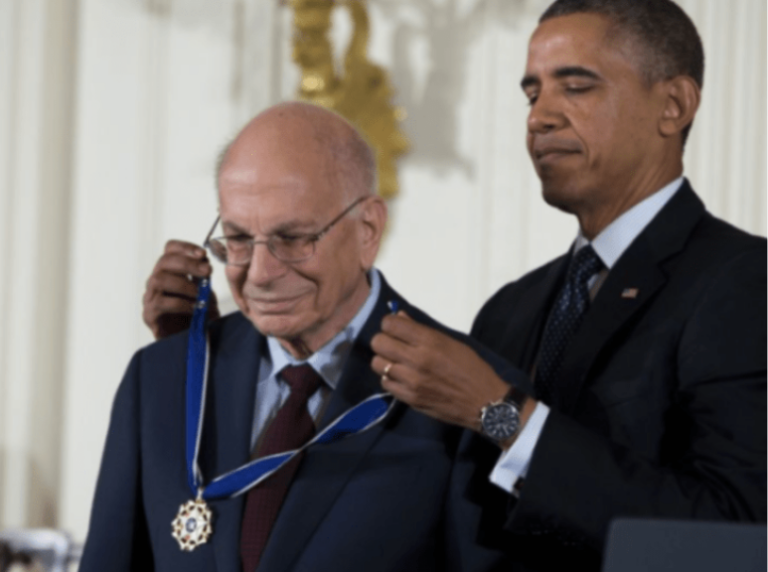Talking Big Ideas.
“It’s not 10,000 hours. It’s 10,000 iterations.”
~ Naval Ravikant
Two high school dropouts were standing together on a beach.
One was missing his front teeth. The young men were partners. Eager to make money, they started a little bike shop to profit off the cycling craze sweeping the country.
The knowledge they gained from bikes made them wonder if they could build something that had never been built before. A device that would realize the dreams of humans since the dawn of time.
A flying machine that people could ride through the air.
They knew most experts believed that human flight was a fantasy. Lord Kelvin, among the most revered scientists of their time, had recently written that “heavier-than-air flying machines are impossible.”
But the young men were convinced they stumbled upon a secret the world’s top scientists and engineers all missed. A secret they uncovered by knowing how people ride bicycles.
They built their flying machine differently from any other. It moved and steered like a bike.
And it worked.
Their first flight, on a beach in North Carolina, was captured in a photograph that would go viral worldwide.
Against seemingly impossible odds, two amateur bicycle makers with no formal education or financial support ushered in the era of human flight. They were, of course, the brothers Orville and Wilbur Wright.
How did they succeed?
The same way everybody does:
- They learned
- They practiced
- They iterated
LEARN
Josh Waitzkin, the chess prodigy turned world-champion martial artist, says that “The key to pursuing excellence is to embrace an organic, long-term learning process.”
The Wright brothers wrote to the Smithsonian to get research on flying. They spent years studying birds as well as the leading innovators in flight – from predecessors like Leonardo da Vinci and Otto Lilienthal to contemporaries like Octave Chanute.
In a nutshell, they learned a lot about flying.
When it comes to public speaking, Dale Carnegie encouraged his students to focus on topics they’d “earned the right to talk about through experience or education.” We are already the world’s leading experts on ourselves! And we become experts on everything else through experience and study.
When we don’t have total clarity on our topics, we can follow the Wright Brothers’ lead and do research. Thankfully, as Cowen’s Second Law states, “there is literature on everything.”
We have access to libraries and the Internet. We can follow experts on Twitter and Substack. And listen to podcasts and audiobooks.
We can capture our own stories as well as any other stories that resonate with us. We can internalize, discuss, and debate our ideas. And stitch them together with others.
PRACTICE
Practice is a major reason the Wright Brothers succeeded where everyone else failed.
Prevailing wisdom held that pilots wouldn’t be able to react to changing winds. And so other aviators didn’t bother having their pilots practice the nuance of flying.
Wilbur and Orville took the unique path of building an airplane that could be steered and controlled like a bike. They spent four years practicing how to pilot the planes they built.
Tim Koegel ends his bestselling book on public speaking with this: “Those who practice make progress. Those who don’t, don’t.”
We see this all the time with our clients. The ones who make the most progress put in the most effort to practice.
This doesn’t mean mindless repetition. For example, people spend their whole lives speaking, but they don’t make progress until their practice becomes focused.
Anders Ericsson, one of history’s top experts on human achievement, taught that practice must be “deliberate” to be effective.
We encourage this three-step process based on Ericsson’s research:
- Identify one specific thing to improve.
- Run reps focused just on that one thing.
- Review your performance to see how you did.
We do this with our clients. Say they want to improve their eye contact. We’ll have them practice their talk and only focus on eye contact. It doesn’t matter if everything else is terrible. Once they master their eye contact, we move on to something else.
A note on step 3: most speakers hate to do this at first. Watching footage of ourselves can be tough. Without pressure from a coach, many will refuse to do it. But it’s essential for effective practice. This is why successful athletes (and public speakers!) spend time “watching the tape.”
We need an accurate understanding of where we are so we can figure out the best path forward.
ITERATE
The Wright brothers spent four years building different flying machines. They tested them in the field, recorded the results, and found ways to make adjustments.
On occasion, they made big changes in design. But most often their tweaks were tiny. Using bicycle glue to secure components. Swapping a heavy gear with lightweight wire.
Many days brought setbacks. Others had breakthroughs. The brothers learned and iterated constantly based on all their research, practice, and feedback.
Little by little, year after year, their flying machine evolved.
This is the path for all progress in our universe.
It’s how biology forms complex life. How markets create wealth. And how humans build new technologies – and skills.
As the neuroscientist Ethan Kross says, iteration based on reflection and feedback is “one of the central evolutionary advances that distinguish human beings from other species.”
Unlike markets and biology, we have the power to consciously learn from our experiences. And adjust accordingly.
MAGIC
For years the Wright Brothers toiled without success. Then one cold winter Thursday everything changed. They became the first people in history to partake in the miracle of human flight.
Iterations compound over time. Eventually, the results can look and feel like magic.
Ben Franklin gave $2,000 to the cities of Boston and Philadelphia. He stipulated the money had to be invested over a long time. 200 years later, the New York Times reported the sum was more than $6.5 million.
Tiny continuous progress stretched over time results in transformational growth. This is why Albert Einstein called compounding the eighth wonder of the world.
Compound growth is what creates breakthrough innovations and world-class performers. It’s how our client stayed so calm and eloquent this week while arguing before the U.S. Supreme Court. It’s what turned a sweaty stammering boy named Winston into the most influential and inspiring leader of the Second World War.
And if you simply allow it, compound growth will work like magic for you.
***
![]() IDEA
IDEA
We get better when we learn, practice, and iterate.
What is one tiny change you can test out today?
***
If you find this useful, please subscribe to our free weekly newsletter.





